Tropical Entomology - Avocado Caterpillars
Epimeces detexta, Oxydia vesulia, Anacamptodes sp. (Lepidoptera)
-
Description
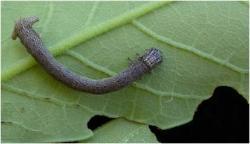
Larva of Oxydia vesuliaSeveral kinds of loopers may infest avocado bloom, clusters and leaves. The most common of these is Epimeces detexta. This looper is the larva of a medium-sized grey or greyish-white moth. Young larvae are 1/4 inch or less in size and usually grey or greyish black, they grow rapidly to 1 1/2 inches or more in length. Older larvae are generally tan or greenish-yellow in color. Larvae feed also on flower panicles, and even fruit, but prefer the tender growth in the upper part of the tree. Looper infestations appear to be somewhat seasonal and are more severe in spring and summer, generally becoming less of a problem in fall and winter.
-
Damage
Part of plant damaged: Leaves, fruits
-
Life Cycle
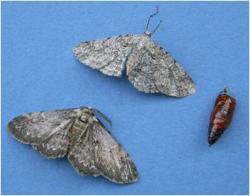
The adult moth is short lived and mates and starts laying eggs soon after emergence from the pupa. Eggs are laid in narrow elongated masses on avocado, but it prefers to oviposit on needles of Australian pine (Casuarina sp.). Eggs hatch in about 5 days. The larvae grow rapidly and pupate 17-22 days after egg hatch. The pupal stage can last 10 days. Thus, a full generation is expected to last between 34-37 days. Pupae drop to the ground and the adult emerges in 12 days to start the cycle over. Some avocados are culled because of damage from feeding on the fruit.
-
Management
Action Levels
Young trees are more affected than mature trees. If 20 larvae or more are observed feeding on trees and trees are severely defoliated, there is need for control. Older trees: If there are small fruits in the grove and more than 30 larvae are collected during a 30 minutes inspection of foliage, there is need for control. If there are no fruits, the tree can stand defoliation of at least 40% of the tree canopy.
Biological Control
Native natural enemies of E. detexta include the predators Calleida decora (Fabricius), Podisus maculiventris (Say). Alcaerrhynchus grandis (Dallas), Parapanteles sp., and Trichospilus diatreae Cherian are natural enemies of Epimeces matronaria, Anacamptode defectaria and Oxydia transponens, respectively (Peña et al.,1996). In Florida, several attempts to introduce exotic biological control agents, i.e., Telenomus sp., and Trichogramma platneri Nagarkatti have failed.
Chemical Control
Several insecticides are labelled for use against avocado caterpillars. Bacillus thuringiensis (Bt) is an alternative that has effect on certain types of caterpillars and is sold under several trade names. The grower should discuss labels and specific recommendations with the local pesticide dealers.
Fact Sheets
-
Images
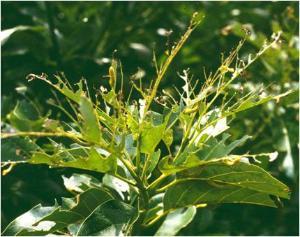
Damage to fruit caused by avocado loopers
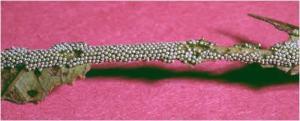
Eggs of Avocado looper, Epimeces detexta
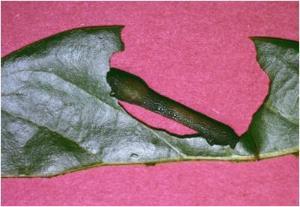
Larva of Avocado looper Epimeces detexta
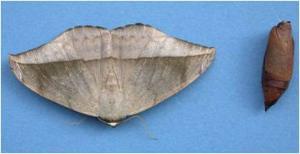
Adults and pupa of Oxydia vesulia
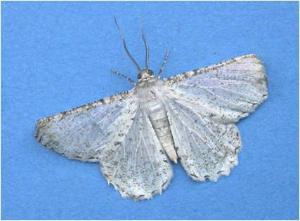
Adult moth of avocado looper Epimeces detexta
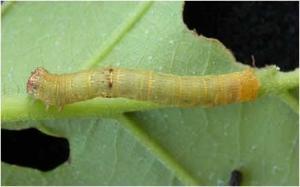
Foliage damage from avocado loopers

